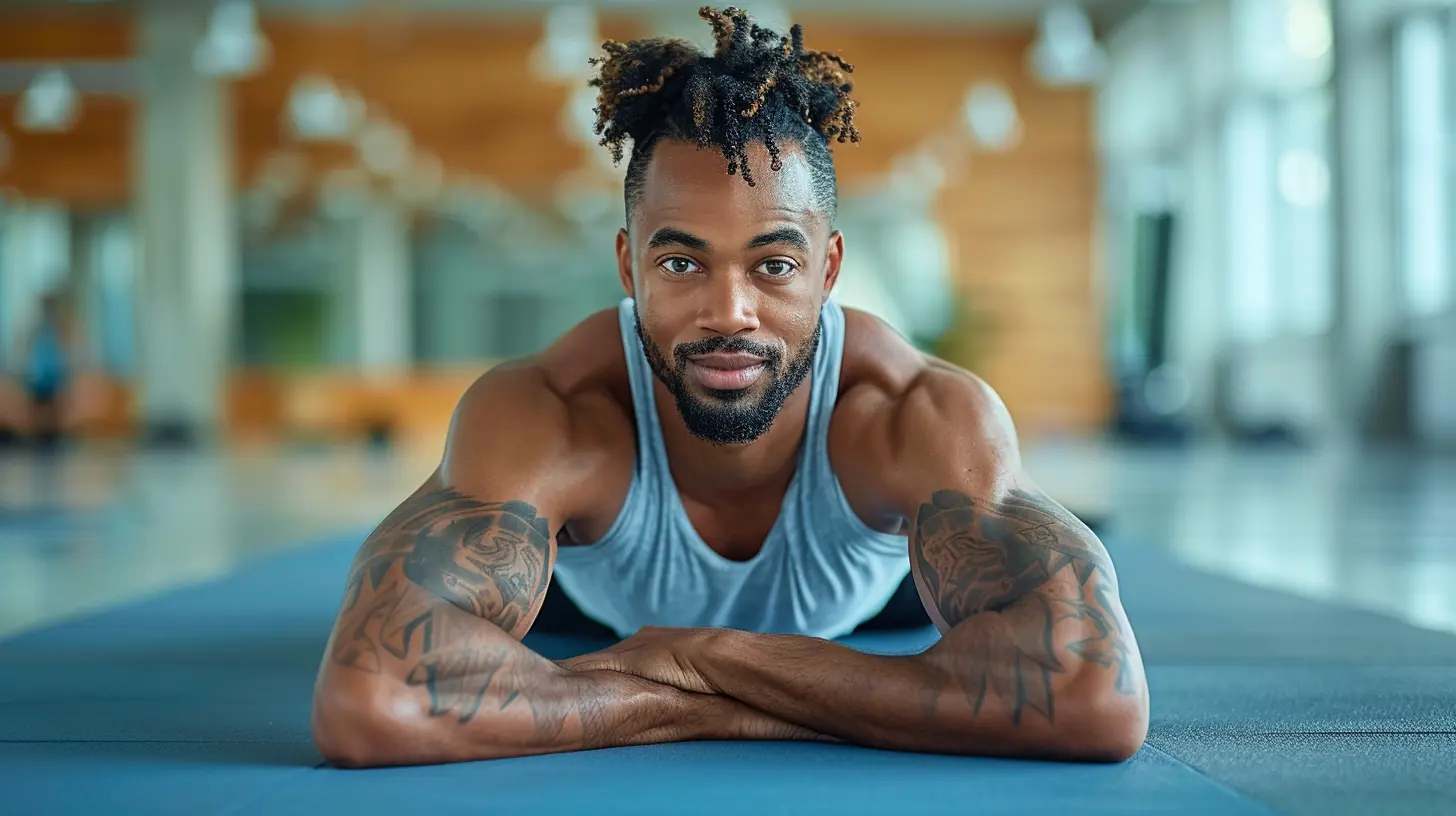Stretching Techniques That Enhance Post-Workout Healing
17 June 2025
Working out is great for your body, but what you do after exercise is just as important as the workout itself. One of the best ways to speed up recovery, prevent soreness, and improve flexibility is stretching.
But here’s the catch—not all stretches are created equal. Some techniques work wonders for recovery, while others might not be as effective post-workout. In this article, we’ll dive into the best stretching techniques that will help your muscles heal faster, reduce stiffness, and keep your body in top shape.

Why Stretching Matters After a Workout
Ever finished a workout and woke up the next day feeling like you got hit by a truck? That’s delayed onset muscle soreness (DOMS), which happens when your muscles recover from intense exercise.Stretching after a workout can:
- Improve blood circulation – This speeds up the delivery of oxygen and nutrients to tired muscles.
- Reduce muscle stiffness – Helps prevent that tight, uncomfortable feeling after exercise.
- Boost flexibility – Keeps your muscles long and limber, reducing your risk of injury.
- Enhance relaxation – Stretching can activate your parasympathetic nervous system, helping your body calm down.
Now, let’s jump into the best stretching techniques to enhance post-workout healing! 
1. Static Stretching: The Classic Cool-Down
What It Is
Static stretching involves holding a stretch for a set amount of time—usually 20 to 60 seconds. This helps muscles relax and lengthen after being worked during exercise.Why It Works
When your muscles are warm post-workout, static stretching can increase flexibility and reduce tightness. By holding the stretch, you allow your muscles to gradually relax, helping prevent stiffness and soreness.Best Static Stretches for Recovery
- Hamstring Stretch – Sit with legs extended, reach for your toes, and hold.- Quadriceps Stretch – Stand on one leg, grab your ankle, pull it towards your glutes.
- Chest Opener Stretch – Clasp hands behind your back and lift slightly to open up your chest.
Pro Tip
Breathe deeply while holding each stretch. Inhale through your nose and exhale through your mouth to encourage relaxation.
2. Dynamic Stretching: Keep It Moving
What It Is
Unlike static stretching, dynamic stretching involves moving through a range of motion to gently stretch muscles.Why It Works
Dynamic stretching is great for increasing circulation and mobility, especially if you’re transitioning from an intense workout to normal daily activity. It helps flush out lactic acid, reducing muscle soreness.Best Dynamic Stretches for Recovery
- Leg Swings – Swing your leg forward and backward while holding onto a stable surface.- Arm Circles – Slowly rotate your arms in wide circles.
- Torso Twists – Stand tall and gently twist your torso side to side.
Pro Tip
Perform dynamic stretches at a controlled pace—this isn’t a race! The goal is to gently move your muscles, not strain them.
3. PNF Stretching: Trick Your Muscles into Relaxing
What It Is
Proprioceptive Neuromuscular Facilitation (PNF) stretching is one of the most effective ways to improve flexibility and aid post-workout recovery. It involves a combination of stretching and contracting the muscle.Why It Works
PNF stretching tricks your muscles into relaxing deeper than they normally would. It increases range of motion more effectively than static stretching alone.How to Do It
1. Stretch the muscle to a comfortable position.2. Contract the stretched muscle for 5-10 seconds.
3. Relax and stretch further for 20-30 seconds.
4. Repeat 2-3 times.
Best PNF Stretch for Recovery
- Hamstring PNF Stretch – Lie on your back, lift one leg, and hold it behind the thigh. Push against your hands for resistance, then relax and stretch deeper.Pro Tip
You’ll feel the difference immediately after a PNF stretch. But don’t overdo it—too much force can cause injury rather than prevent it.4. Foam Rolling: The Ultimate Muscle Massage
What It Is
Foam rolling (also called self-myofascial release) is like giving your muscles a deep tissue massage with a cylindrical foam roller.Why It Works
Foam rolling helps break up muscle knots and tension, improves circulation, and speeds up recovery. It’s like pressing the reset button on your tight muscles.How to Foam Roll Effectively
1. Slowly roll over tight areas for 30-60 seconds.2. If you find a sore spot, pause and hold for 20-30 seconds.
3. Breathe deeply and relax as you roll.
Best Areas to Foam Roll
- Quads – Roll from the top of your thighs down to your knees.- Calves – Roll from your ankles up to just below your knees.
- Upper Back – Place the foam roller under your shoulders and roll up and down.
Pro Tip
If foam rolling hurts a lot, you’re probably applying too much pressure. Go slow and adjust as needed!5. Yoga-Based Stretches: Mind & Body Recovery
What It Is
Yoga is a gentle but powerful way to stretch your muscles while also calming your mind. Many yoga poses double as excellent post-workout recovery stretches.Why It Works
Yoga-based stretches improve flexibility, balance, and relaxation, making them ideal after intense exercise.Best Yoga Stretches for Recovery
- Downward Dog – Stretches hamstrings, calves, and shoulders.- Child’s Pose – Gently stretches the lower back and hips.
- Pigeon Pose – Targets tight hip flexors.
Pro Tip
Combine these with deep breathing for maximum relaxation and muscle release.6. Active Isolated Stretching (AIS): Flex Without Strain
What It Is
Active isolated stretching (AIS) involves holding a stretch for just 1-2 seconds before releasing and repeating. It’s a controlled, gentle way to increase flexibility.Why It Works
AIS avoids overstretching and allows muscles to gradually extend without triggering a protective reflex that tightens them up.How to Do It
1. Stretch a muscle for 1-2 seconds.2. Release and repeat 8-10 times.
3. Increase the stretch slightly each time.
Best AIS Stretches
- Seated Hamstring Stretch – Sit with one leg extended, reach forward briefly, then return.- Hip Flexor Stretch – Kneel on one knee, lean forward slightly, then return.
Pro Tip
AIS is great for targeting specific tight muscles and keeping your flexibility in check.Final Thoughts
Stretching after a workout isn’t just a feel-good routine—it’s an essential part of muscle recovery and injury prevention. Whether you prefer static stretching, foam rolling, or yoga-based movements, incorporating these post-workout techniques can help your body heal faster and stay limber.So next time you finish a sweat session, don’t skip the stretch. Your muscles will thank you!
all images in this post were generated using AI tools
Category:
Post Workout RecoveryAuthor:

Holly Ellison
Discussion
rate this article
2 comments
Uri King
Essential for recovery; promotes flexibility and strength.
June 22, 2025 at 3:16 PM

Holly Ellison
Thank you! I'm glad you found the article helpful in understanding the importance of stretching for recovery.
Catherine Carter
This article effectively highlights the importance of stretching for post-workout recovery, detailing techniques that improve flexibility, reduce soreness, and enhance overall muscle healing. Great insights!
June 18, 2025 at 2:52 PM

Holly Ellison
Thank you for your feedback! I'm glad you found the insights on stretching techniques helpful for post-workout recovery.


